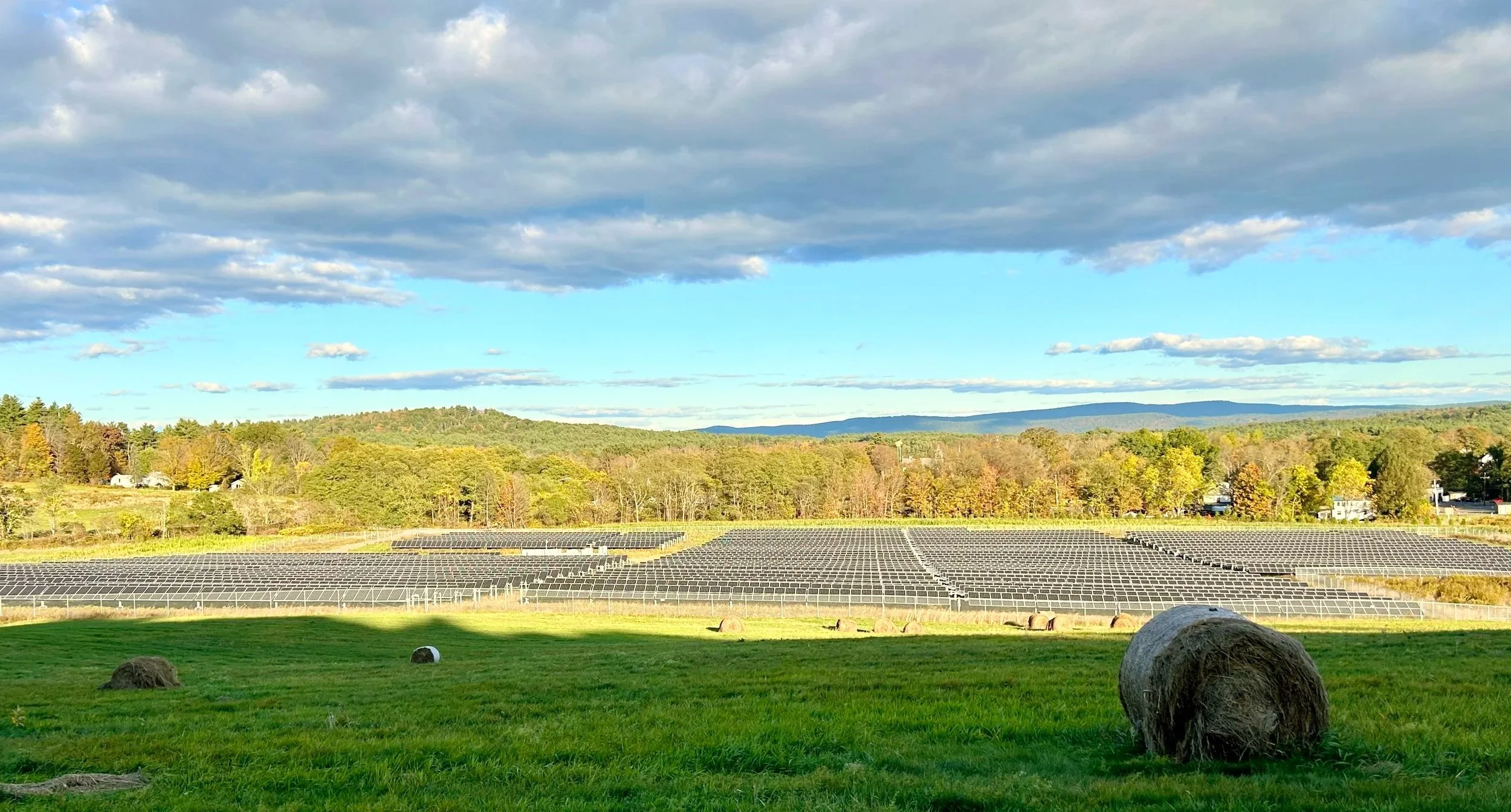Bridging the Gap Between Clean-Energy Ambition and Local Reality
I still remember standing in a crowded public hearing in western Massachusetts, answering questions from residents worried about a new community solar project — the first in their town. It wasn’t hostility; it was concern. People wanted to understand what was changing and why, and whether it might harm their community.
The project was proposed to be built on a struggling family dairy farm, with the owners counting on the solar lease payments to help keep their farm viable. That moment has stuck with me. It’s one reason I launched CBR Energy Solutions: to help bridge the gap between clean-energy ambition and local reality.
The community solar project generating clean energy on a family farm in Western Massachusetts
The Human Side of Clean Energy
Across New England and New York, we’re modernizing the grid, adding battery storage, and building the clean-power facilities needed to meet ambitious climate goals. But progress on paper doesn’t always translate smoothly to results on the ground.
When new technologies appear in familiar landscapes — a solar project in a rural community, a battery energy storage facility at the edge of a neighborhood — questions are inevitable.
Is it safe? Will it change the character of the area? What’s in it for us? Why here?
Those are fair questions. Yet too often, they’re met not with clarity, but with noise. Misinformation spreads quickly online. Outdated or misleading information fills the gaps left in outreach efforts. And sometimes, entrenched interests amplify fear and doubt to derail the process.
It’s human nature to be cautious or afraid about what we don’t understand. The challenge for those of us working in clean energy isn’t to dismiss skepticism — it’s to engage with it.
Rising Concern About Energy Costs
One of the growing areas of misunderstanding involves the cost of electricity — questions that can undermine public support for clean energy. Many residents encounter renewable projects with an assumption — sometimes fueled by misinformation — that ‘green energy’ makes bills go up. The reality is far more nuanced. Projects like community solar, battery storage, wind, and hydropower all affect electric rates differently, depending on how they interact with the grid and wholesale markets.
Battery storage can reduce peak demand costs, improve system reliability, and decrease the need for new transmission. Solar can help stabilize daytime prices and create local savings through net metering and community solar. Transmission upgrades, while expensive upfront, can unlock access to lower-cost renewable generation across regions.
But these relationships aren’t always explained clearly. Too often, rate impacts are discussed in technical filings that never reach the public — or are reduced to talking points that ignore long-term benefits.
If we want public confidence in clean energy to grow, we need stronger analysis, and stronger communication, about costs and benefits. Communities deserve transparent, data-driven explanations of how renewable projects can help stabilize rates over time — and where near-term challenges exist.
This is an area where developers, consultants, and policymakers can work together not only to design better projects, but to educate the public and advocate the benefits of cheap, renewable energy with clarity.
The Gap Between Policy and Practice
State climate mandates set the direction, but they can’t substitute for trust. The real test comes when ambitious goals meet the complexity of local permitting and community concerns.
I’ve sat in meetings where developers (myself included!) reference statewide decarbonization targets and the climate crisis, while local residents focus on traffic, noise, and safety. Both perspectives are valid — they’re just sometimes speaking past each other. That’s where the process can either break down — or bring interests together.
The permitting and siting reforms underway in Massachusetts — part of the 2024 Climate Act — acknowledge this reality. The law emphasizes greater transparency and public engagement as cornerstones of credible development.
But the implementation of the Climate Act — through forthcoming guidance and regulations — must also make permitting more efficient, predictable, and timely if it’s to achieve its goals. Some provisions, such as those addressing site suitability and cumulative impact analyses, have the intent to strengthen community trust and improve project outcomes. Yet if requirements are ultimately overly complex or burdensome, they could slow clean-energy deployment without yielding greater public confidence.
Practical Solutions Require Listening
Many successful projects I’ve worked on began with both conceptual engineering and conversations with stakeholders. When developers and consultants take the time to listen and respond — with facts, empathy, and openness — the process becomes more than a regulatory hurdle. It becomes a dialogue. I’ve found that facts alone rarely change minds. Listening does. Once people feel heard, the data starts to matter.
As consultants, we play a vital role in translating between the technical and the personal, between the government and the community. We can’t eliminate uncertainty, but we can make the benefits and process clear enough that people feel comfortable living with it.
Moving from Resistance to Collaboration
We’re entering a new phase of clean-energy development — one that will depend as much on communication as on engineering.
To succeed, we’ll need to balance speed with respect, scale with sensitivity, and innovation with transparency. Misunderstanding and misinformation — especially about risks and costs — will continue to test that balance, but they don’t have to define it.
The antidote is connection: honest dialogue, clear information, and shared purpose.
That’s what I aim to foster through my work at CBR Energy Solutions — and how we can make the clean-energy transition more practical, inclusive, and real. If you’d like to discuss siting, permitting, or community engagement for clean-energy projects, reach out at info@cbrenergysolutions.com.

